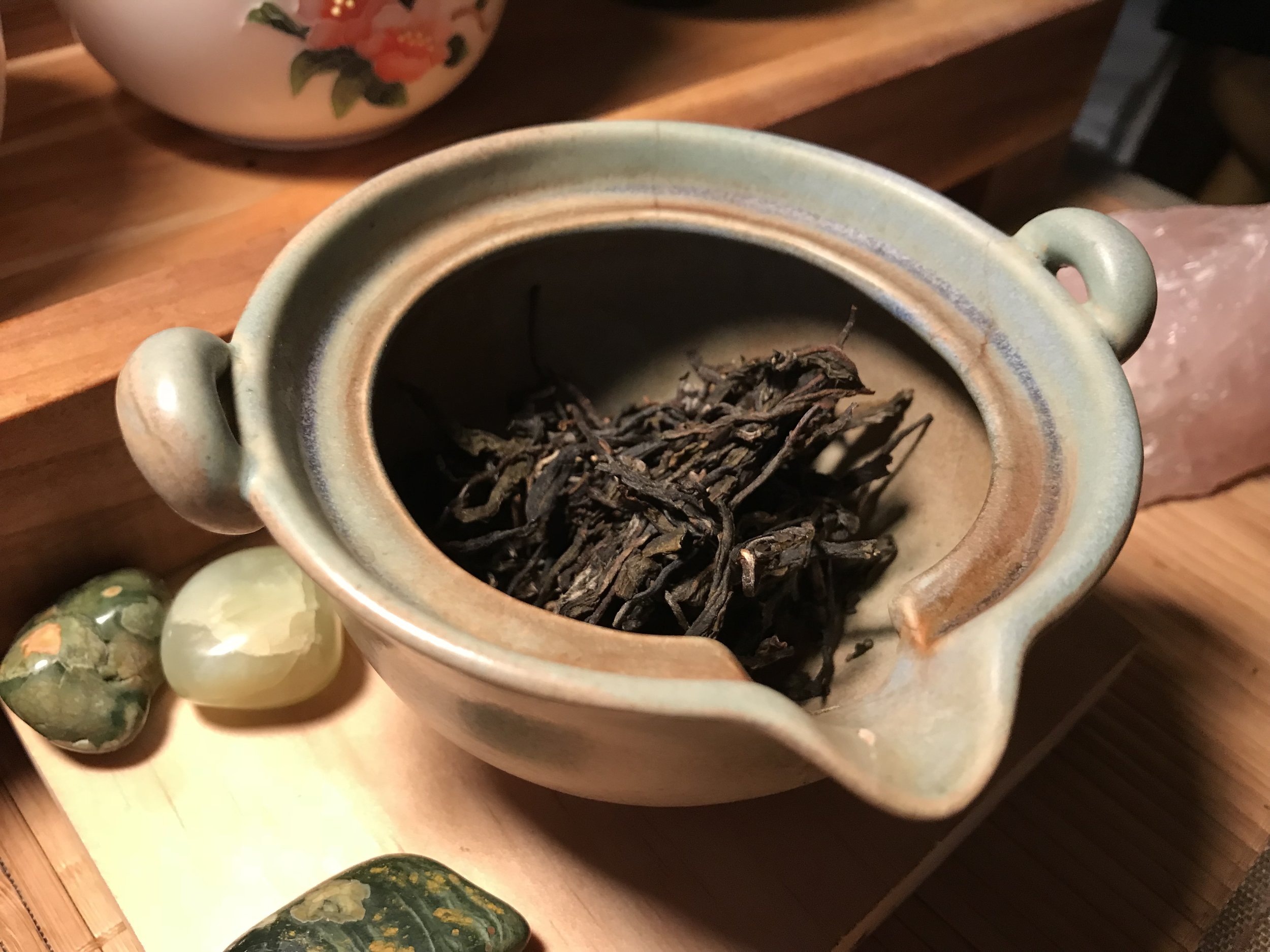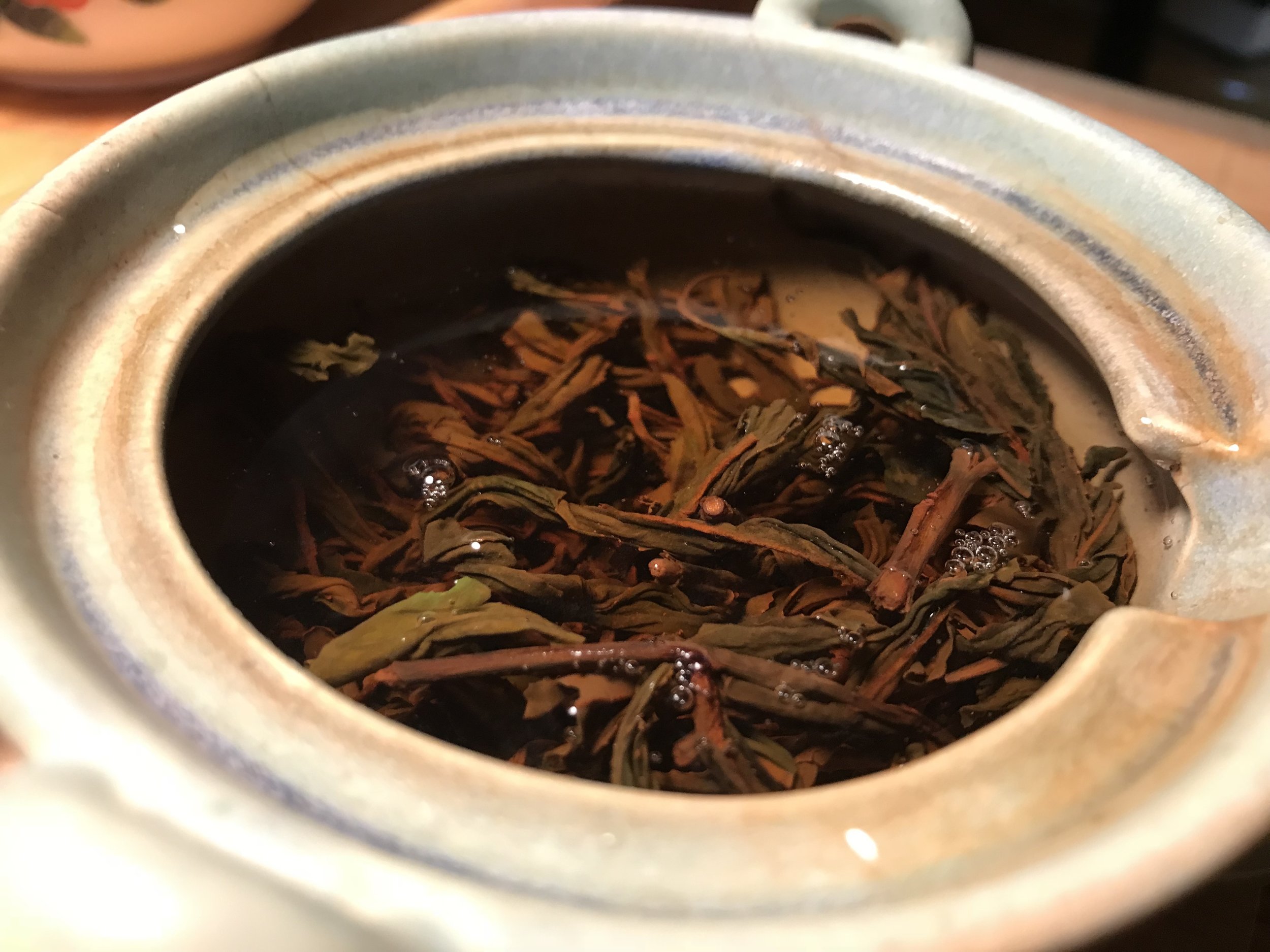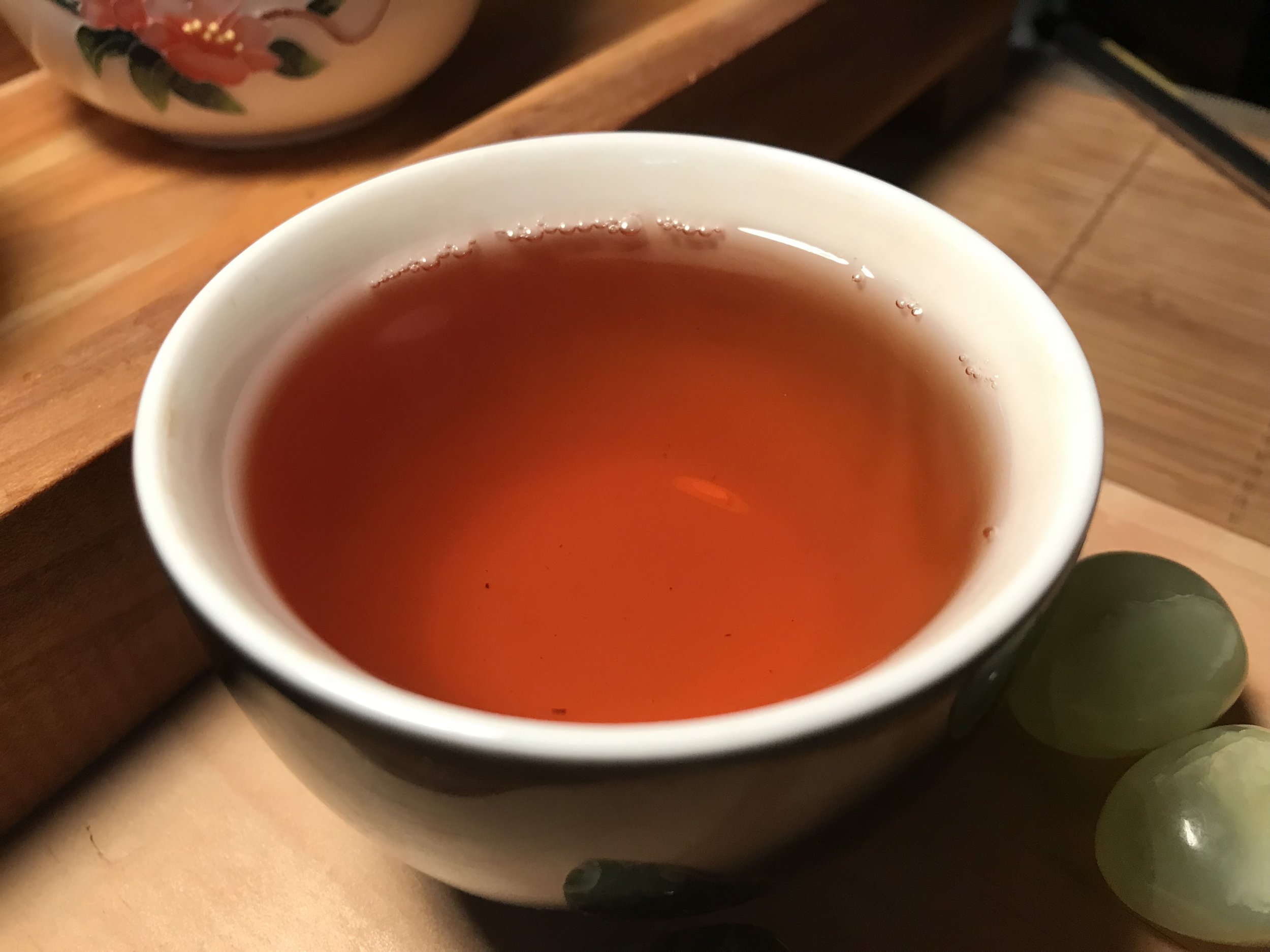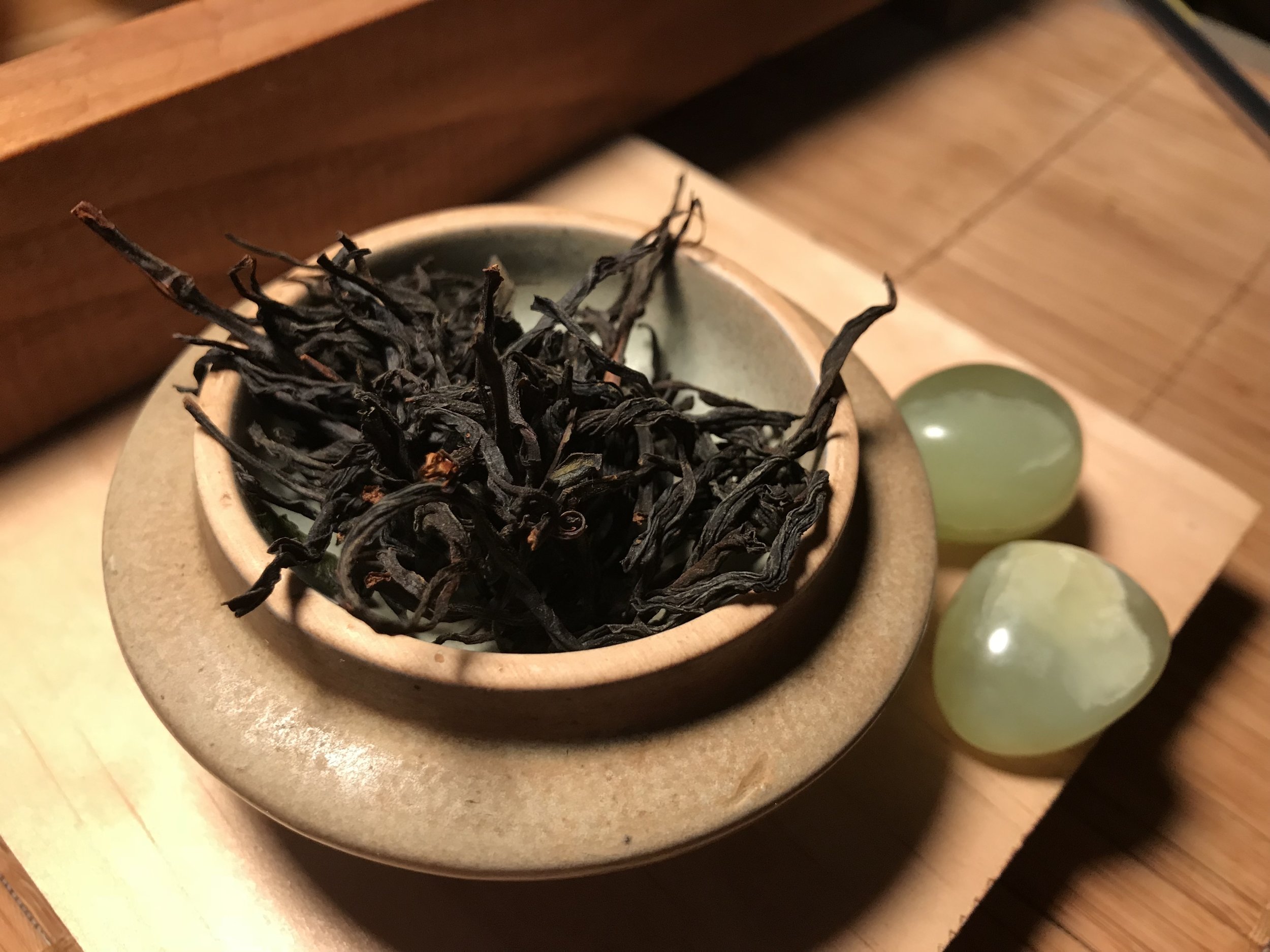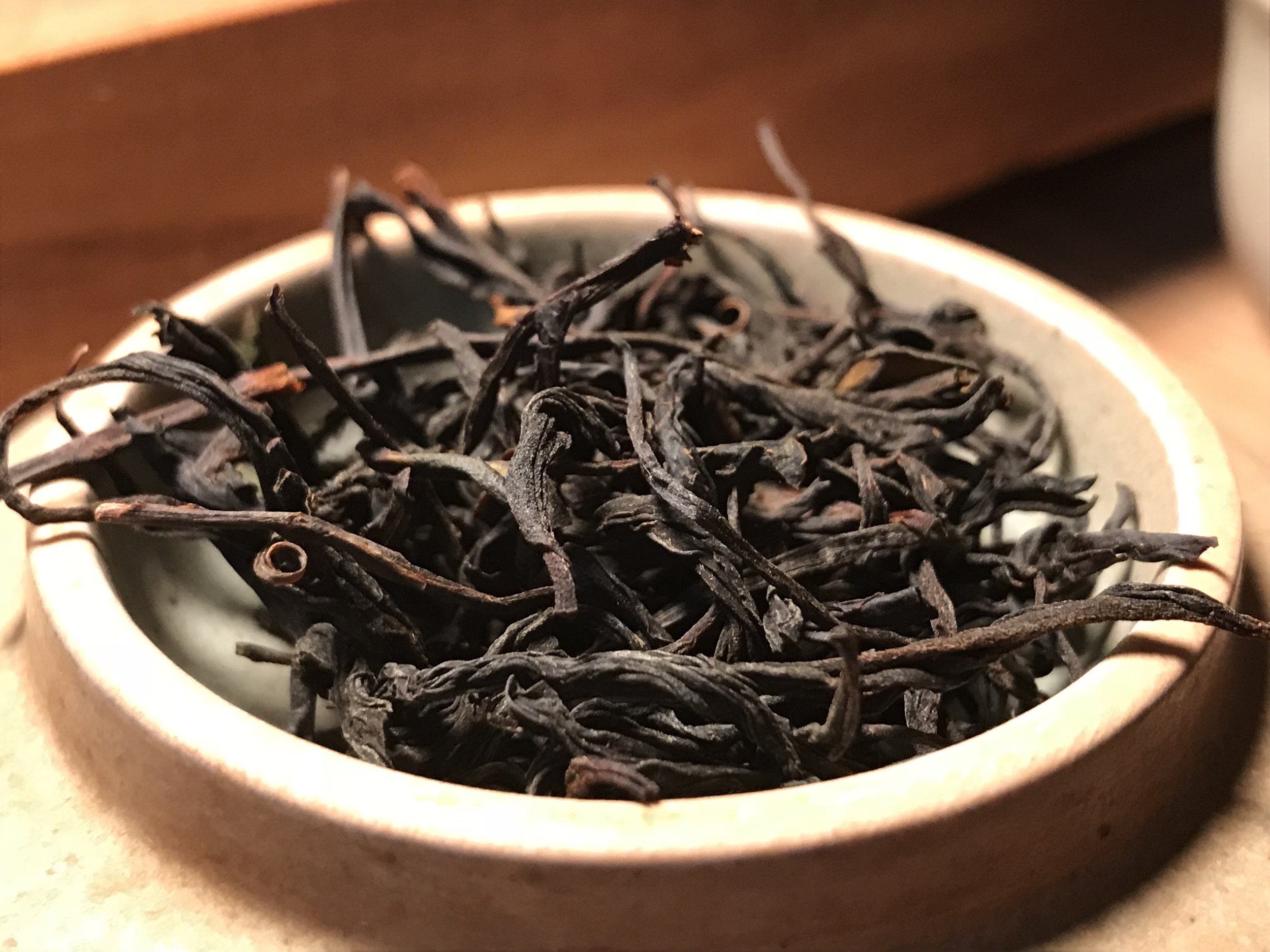My Journey with Qigong
I was introduced to qigong about 20 years ago as a college student studying composition and Film Scoring at Berklee College of Music. During this time I became deeply interested in nature, backpacking, contemplation and spirituality, particularly in eastern traditions like Taoism and Buddhism.
During breaks from school I would use my outdoor skills that I learned from a NOLS [National Outdoor Leadership School] expedition in Alaska and would spend a lot of time in nature. I became very sensitive and aware to my interconnectedness with the natural energies of the environment while also becoming more aware of the layers of myself. This ignited in me a desire to more deeply understand myself and my place in the world.
This desire revealed a hidden path that began to unfold. Through a close friend I was introduced to someone who would become a great mentor. During our first meeting we had some conversation and sat for a session of meditation. I had never practiced a formal meditation before and followed his instruction. He told me to follow my breath and let go. Together we sat for about 30 minutes or so. During that time I watched as my thoughts began to slow down and disappear until I was not aware of my body anymore. Instead I was aware mostly of pulsing energies and light. I came out of the experience surprisingly energized and clear. I had never experienced something like that, yet it was somehow familiar and reminded me of times of contemplation and quiet in the forests or mountains. This moment changed the trajectory of my life. This mentor introduced me to meditation, deeper insight into eastern traditions, to my surprise: mystic christian traditions that I didn’t know existed, A Course in Miracles, the consciousness techniques of Robert Monroe [the Monroe institute] and lastly the practice of qigong.
My mentor and I had many discussions about consciousness and energy [qi] because of the experiences that I was having while meditating with him and on my own. He began to share with me the theory and practice of techniques that utilize the natural energies of the universe and environment for health and spiritual development. These techniques he shared with me were qigong exercises. I must note here that I am eternally grateful for his guidance because qigong, as is any other non-physical or spiritual practice, is not without pit-falls. He would always, and still does, remind me of my purpose in practicing. I still hear his voice guiding me as I go deeper with the practice.
Through his recommendation I explored qigong in counterpoint with my spiritual practice and sitting mediation. I found that the dynamic movements and the multi-layered awareness that qigong utilizes, helped me remain rooted in the body while contemplating and experiencing expanded states of awareness that spiritual practice was inducing. With frequent qigong practice my body also felt more energized and flexible. Learning about this led me to the connection of body and mind and eventually into studying Chinese Medicine and pursuing a career as a practitioner of Acupuncture.
After I attained a masters degree in Chinese Medicine, and a few years into my clinical practice, I decided to pursue a deeper knowledge and experience of qigong and started to study medical qigong at IMQC [International Medical Qigong College]. Here, I learned the foundations of Daoism and qigong practice. It become very clear to me though my study and practicing that qigong is not simply a set of exercises to stretch the body and temporarily calm the mind (although the practice does support this!) but an alchemical path that leads one through self-transformation and the unfolding of one’s spiritual nature.
I often find it difficult to explain qigong to others because it is so vast and is embedded In a tradition of such antiquity, great depth, and understanding that simple words do not capture it’s value.
With many years of practice and study now, I am by no means a master of this art. I am however, comfortable sharing the foundations of qigong, my learning and experiences so far. I have navigated both establishing the principles and practices into my own life while also becoming aware of and experiencing the pitfalls of practices like qigong ( this could be another whole conversation !)
Practicing qigong not only helps my body feel energized and healthy but perhaps more importantly, it helps me cultivate awareness. Awareness of what is stuck and not moving in my life whether it be in the body, in the mind, or both. Qigong reconnects me with what is infinitely greater than my small-self yet reminds me of my part in the world.
qigong is now an essential part of my personal and clinical practice. It impacts how I use acupuncture with my patients in both diagnosis and in treatment. Medical qigong treatment is also a modality I am excited and happy to offer my patients. Sharing qigong privately and in classes as both a health and self-cultivation practice is also an exciting development in my journey.
The journey continues an I still study, and will continue, to refine my knowledge and practice of qigong.
Accessing The Current of Your Spirit, Now.
Accessing the Current of Your Spirit, Now.
Inspired by Hua Hu Ching Chapter 21
I am sitting here with my copy of the Hua Hu Ching, an inspired Taoist teaching that I refer to every now and then. It is written in a beautiful and poetic form in which many taoist teachings are expressed. With many ideas presented through metaphors based in nature, I feel spacious and connected to something bigger than myself after reading a passage.
Chapter 21 is a teaching in the form of a rushing river, whose current continuously moves and that one cannot grasp and make her own.
It has been my experience that the expansive awareness of the spirit is like the refreshing and cascading flow of a river. It cannot be paused, analyzed or anticipated, it must be directly experienced in the moment. I’ve learned with practice that this only happens when I get myself out of the way.
To get out of the way simply means to become the observer of thoughts, feelings, images, sounds etc. without getting entangled in them. With practice there begins to be more space in between the thoughts and eventually a different kind of awareness arises that cannot be expressed in words. The closest I can get is to describing this awareness is : peaceful, expansive, complete, timeless, loving, satisfied & One.
An inner-purification begins to happen when I am consistent in this practice. My mind slows down, I become less attached to things, I become more understanding and present with those around me.
So I encourage you to become like the rushing river, whose current is unique in every instant. A powerful movement that cannot be molded into something else. Let it be as it is and observe. Allow the expansiveness of your inner spirit (which has always been there) encompass you.
Try this:
Set a timer for five minutes. Sit comfortably, relax the body and take a few deep breaths. Become the observer of thoughts and watch all that crosses the screen of your awareness. It doesn’t matter what the content is, just watch without engaging it. Simply try this and notice what happens with practice.
Reflections on the Autumn Season
Reflections on the Autumn Season
Part of living the practices and principles of Chinese Medicine is having an understanding of the effects of the seasons on the body and mind. With awareness of this, one can take advantage of the different energies of each season to further cultivate vitality and longevity.
Autumn is the time of consolidation. Nature is no longer bursting with new growth like Spring & Summer but is instead slowing down. Things in nature begin to conserve resources in preparation for the winter. The trees release their leaves, plants no longer bear fruit and new growth comes to a halt.
As part of nature, it is wise for us in the human family to follow and cultivate the energies of the seasons. It is said that to go against nature is a sure way gradually damage your own qi and create illness over time.
Here are some tips and reflections to harness the energy of Autumn:
1. Reflection on the Virtue of Integrity.
The spiritual virtue associated with the Autumn season is integrity. One who has cultivated integrity has transformed the emotions of shame, guilt, sadness, & self doubt. Integrity is all about "owning one's stuff", taking responsibility and having the courage to do what is right. Taking responsibility for oneself and accepting the consequences of ones actions takes incredible courage and honesty. This is integrity. The following questions, followed by action, are sure ways to harness the energy of the fall and cultivate integrity.
Am I holding myself accountable?
Am I acting in accordance with my life purpose and guiding principle?
Am I taking responsibility for myself?
Am I being honest with myself and others?
Am I willing to take action in an area of my life that requires great courage?
What can I let go of that no longer serves me?
2. Time outside in nature.
Simply get outside. If possible a find forest or somewhere you can get away from the normal day to day business of life. While enjoying nature stay off of the phone! This will allow your awareness to be more broad, abstract and to be in a purely natural energy field.
3. Begin to conserve your energies.
This is so important and is very much overlooked in our culture.
- Allow yourself to rest as there is more darkness in the day.
- Just like the trees let go of the leaves, begin let go of what does not serve you anymore. You don't need to be wasting energy on something that isn't important anymore. This could be material things or mental & emotional tendencies.
4.Exercise that builds and conserves energy.
During Autumn we want to build and especially conserve qi. Qi gong or Taiji are excellent practices for Autumn. Deep breathing exercises are also excellent as the lungs are the organ associated with Autumn. We want to avoid any exercise that is burning up more qi than we conserve.
5.Reflection & Meditation
Reflection and meditation allow for the more yin qualities of stillness and reflection that the Autumn season encourages.
Quieting The Mind by Letting Go of Limits: Hua Hu Ching Chapter 13
I have read this chapter from the Hua Hu Ching everyday for the past month. I read it a few times slowly, let the words and the energy behind it sink in, let go of my ideas and simply notice.
This particular chapter is absolutely profound and has challenged the rational part of my mind, helping me to zoom out. In those moments as I let go, there are no thoughts, no conditions to think about and nothing to hold onto. It feels like I am free-falling, with complete trust and and joy, deeper into myself. It can’t describe the state of mind except as: Awesome, Loving, Secure & Unchanging. Just like a picture can’t capture the grandeur of a beautiful landscape, these words can’t even come close to capturing that feeling.
I have come to learn and experience that there is something deeply peaceful, quiet, wordless & mysterious underneath my thinking & ideas. It feels whole, total, loving, shared and powerful.
I have only gained access to this peaceful state when I allow myself to get there. Willingness seems to be the key. When I become willing to let go of the knife that is the habitual and conditioned mind, that same exact experience is there to greet me each time. There can be a lot going on in my mind, as I am sure it is the case with most people. However, No matter how much content is swirling in my mind, emotionally charged experiences, whether I am active or sitting in meditation,If I am willing to take a few breaths & let go of my perspective and limits, It’s there: That quiet, loving & wordless guiding force.
Read this passage slowly, over and over. Let it “Stir the pot” for you. Let yourself experience it conceptually and non-conceptually. let it challenge you and, even if it is only for a second, allow it to guide you into the experience of limitlessness.
Tea Sessions #6 2015 Litte Walks (Raw Pu'er)
Today I am drinking a gentle basic Pu'er tea that I would classify as a daily drinker. This is a Pu'er from White2Tea.com. Raw pu'er tea is one of my favorite to drink because it can be so complex and intense. The 2015 Little Walks offers a refreshing break from intensity of taste and qi stimulation. It is quite basic and pleasant to drink. I have had this tea for over 2 years and it has mellowed in taste quite a bit.
Leaves:
The tea comes compressed into a cake like many pu'er teas. They are easily separated.
Aroma
Dry : Sweet & Floral
The Dry leaves have a light aroma that is sweet, subtly fruity & floral.The aroma gently stimulates qi in the head and fizzles out over 20 seconds or so. There is also a slight stimulation in the center of chest around the Tanzhong point CV17.
Wet: As I have said in other tea sessions, one of my favorite moments while I am drinking tea is the aroma after the initial wash. The initial wash is to clean and “awaken” the tea. The wet leaf of this 2015 little walks stimulates qi in the head and ripples around towards the back of my ears and eyes. like the dry leaf aroma there is also a little puff of qi movement around in the center of the chest.
Taste
1st brew (200 Degree, 10 seconds)
This raw pu’er tea is very subtle, sweet, floral and a little fruity. The first brew is light and has a nice little floral after taste that lingers on the palate. As I finish the first cup I notice the same qi stimulation as in the wet leaf but more pronounced. It gently activates qi inside of and around the head. The qi stimulation is relaxing and soft feeling, there is a vibration around the temples and ST8 acu point. There is a very subtle vibration behind the eyes too. There is not a major directional push of energy as in the 2016 Harmony Gua. The qi is gently activated and then subsides.
2nd - 3rd Brew (200 Degree, 20 sec)
The second brew is definitely stronger than the first. When it comes to Raw Pu’er tea, I would say that it is still gentle. The dominant flavors are sweet & floral. There is a pleasant, slight bitterness that comes out in steep #2. The qi stimulation is the same as the first brew with a slightly more pronounced descending motion as the bitterness comes out.
Color
The color of the brew is a nice amber color. 2 years ago when I first got this pu’er cake the color of the liquor was bright yellow.
My Thoughts
The 2015 Little Walks from White2Tea is a gentle Raw pu’er tea. It is perfect for someone who doesn’t little the bitter flavor that many other pu’er teas have. The qi stimulation is also quite gentle. There is a simple & noticeable movement of qi in and around the head. It seems to subtly activate qi in the upper dantian, the Gallbladder and stomach meridians around the eyes and temples. There is also a nice fuzzy qi feeling in the chest while drinking this tea. Again, there is no major directional qi movement. This is a great tea if you don’t want a lot of stimulation. It lightly rouses the mind to be awake and the portals of perception (eyes, ears nose, tongue, feeling & clarity of thought) to be sharp. This would be an excellent daily drinker for someone who loves pu’er and doesn’t want to break the bank. The 2015 little walks is a great tea to drink while working, studying or with hanging friends & family. It’s gentleness is perfect for someone who doesn’t like intense teas.
Self Evolution & Transformation, Hua Hu Jing Chapter 70
A few weeks ago, during a qigong training, the teacher read out loud the above quote from the Hua Hu Jing. He wanted to remind us that aligning with our virtuous and spiritual nature takes “active, conscious self-transformation”. In other words, it takes great effort and willingness to look at the source of our own suffering, whether it’s physical, mental or emotional. I know for myself that if I want to move forward and evolve in my life, there is no other way than to look inward and take responsibility for my thoughts and actions.
You may have noticed, especially if you have come in to see me for treatment, that much of what I teach involves the mind and self-cultivation practices. I have come to understand, through my training and practice in Chinese medicine and qigong, that healing is much more than physical. Of course, there is healing on the physical level but there is much more to it than that. I would be doing an enormous disservice to all of those who come to see me as patients if I only focused on the physical aspects of healing in my clinic.
The true aim of Chinese medicine is not only to heal the physical body but also to encourage one to grow personally and become a person of great virtue: one who embodies honesty, trust, authenticity, benevolence, inner peace, and wisdom.
There is a saying that "the mind guides qi." This means that our thoughts and intentions have the power to incur great change in all aspects of our being and those around us. That said, as we consciously become aware of and take responsibility for self-serving thoughts, the mind guides qi to be more in alignment with the Tao ( to be in alignment with our virtuous and spiritual nature). This has physical, mental and emotional implications.
Here is an example from my own life: It is my tendency to be quiet and listen rather than to express my point of view, especially in a bold manner. I notice that when I keep my opinion to myself when in my heart I know that I must say something, I experience tightness in my throat and belly and can become frustrated and irritable. When I let this build up over time there are all kinds of symptoms that show up physically, mentally and emotionally. During these times when I am resisting what my life is calling me to do, I feel much less connected to the calm and spiritual nature underneath. When I do this I am acting from fear and self-serving intentions.
- Will I offend or hurt someone if I express my opinion?
- What if I "stir the pot" and make things more complicated?
- I am afraid to have this conversation because it is uncomfortable
- etc.
Here is what I have found: When I express my opinion or give advice when I am feeling called to, instead of holding it in out of fear, I feel amazing. I feel lighter, more inspired, fearless, less tense and FREE. When this happened recently with a family member, there was a giant weight lifted off of both of our shoulders. A simple but difficult situation in which I expressed my own thoughts, changed both of us and the rest of our family. This was acting out of virtue and fearlessness, allowing myself not to be resistant to what life was calling me to do.
I want to remind you now that aligning with our virtuous and spiritual nature does not happen without conscious-self transformation. We must willingly show up to our challenges, and do what we are called to do if we want to evolve as an individual.
As I see so often in the clinic, many physical issues start in the mental and emotional aspects of our tendencies to resist the flow of life. For you, it may be to have more fun, to be more organized, to rest more or to take more action.
No matter what your symptoms are, physical, mental or emotional:
- What are you resisting?
- What are you afraid of?
- How does it feel in your body and mind as you resist?
- Are you acting out of fear?
- What can you, right now, take responsibility for that you haven't addressed?
Tea Sessions #4 Jin Jun Mei
A friend recently hooked me up with this AWESOME tea. She had returned from China a few weeks ago on a Taoist trip. Her group of friends and one of my teachers have a relationship with a tea seller in Beijing. This tea comes from the tea sellers private stash. It is a very high-quality red tea (black tea) called Jin Jun Mei.
When I open the tea jar the leaves smell of honeysuckle in the late summer. Qi expands in the chest around the heart and then descends down through the digestive system.
Leaves
The leaves are large, dark and perfectly intact.
Aroma
Dry Leaf: When I open the tea jar the leaves smell of honeysuckle in the late summer. Qi descends from the head, expands in the chest around the middle dantian and then descends down through the digestive system.
Wet Leaf: The wet leaf smells very sweet and like honeysuckle.
In the cup: The mist that rises off of the liquid is thick and viscous. Its qi goes straight down through the head, chest, and belly.
Taste
1st brew (200 Degree, 10 seconds) Sweet, Malty &Honeysuckle Flower. The sweet flavor remains after drinking the first cup. Similar to the aroma, the energetic movement of the taste descends from the head, through the chest, and into the belly. After the qi moves down through the head it feels like it slows down in the chest. In the chest, there is a puffy vibration as it descends into the belly. After drinking the first cup I literally feel like I've taken a bunch of deep breaths. I feel calm and connected to the earth. Even after a few minutes the sensation and taste remain.
2nd & 3rd brew: In the second brew the sweetness is pronounced and there is a sharpness or clarity that the first brew didn’t have. Interestingly, the energy of the second brew is the same except that initially, I noticed a vibration in glands around my throat and thyroid area. Very unique as I haven’t noticed that sensation with any other teas.
Color
The color of the brew is beautiful dark amber.
My Thoughts
I feel really lucky to have stumbled upon this tea as I've never had such a high-quality Jin Jun Mei. This is a tea I will drink all day long until the decoction is clear and has released all of its essence. The energetics of this Jin Jun Mei, at least in my experience, is unique in that it affects all three dantians. Upper, Middle & Lower. The directionality is descending from upper dantian, through the middle and into the lower. This means that the energetic nature of this tea will support grounding the mind and the heart. Grounding the mind and the heart is experienced as the settling of the mind and emotions. In this state, one is present and receptive. As mentioned above it has a particular affinity for the middle dantian which contains the organ systems of the heart and lungs. Similar to the Xue Wu Ye Dang in tea sessions #3, the energy of this tea moves the qi in the heart and lungs. I would say that the Jin Jun Mei has more of an affinity for the heart though. After taking a sip the qi moved from the head into the chest where it slowed down before going into the belly. This is a tea to drink when feeling like you are in the clouds / stuck in your head or overwhelmed with thoughts or desire. It brings qi down from the head and grounds you into the earth with a pronounced heart qi action on the way down.
If I put the qi of this tea into words it would be something like “ Chill, I got you man. Everything is going to be Ok, Lets enjoy this moment as we’re not promised the next one”
This is a perfect tea for someone like me whose energetic nature is to be in the clouds. It will show you what it feels like to stay connected to the heavens but strongly rooted into the dense material realm of the earth.
Tea Sessions Vol. 1 Bai Mu Dan (White Peony) White Tea
Welcome to Volume 1 of Tea Sessions
Drinking Chinese tea has become a way of life for me over the past 12 years. It began when I moved to Boston in 2005. I found a tea store on Newbury St. called Tealuxe and from there I was hooked. I was surprised to experience the effects drinking tea (camellia sinensis) had on my mind and body. I began to explore the vast world that is tea and it's alchemy. After years of exploring tea, it helped lead me into becoming a practitioner of Chinese medicine. Today I drink tea as a meditation, medicine, a catalyst for creativity and a still mind. If you know me, you know I drink a lot of tea and love to share it.
This on-going series about my adventures with tea is for all of my family, friends and patients who want to know more about tea culture, tea varieties and it's energetic impact on body and mind.
Let's start with the tea I am drinking right now.....
Bai Mu Dan (White Peony) White Tea
The first tea I will share with you is one that I have been really enjoying lately. It is a type of white tea called "Bi Mu Dan", Which means "White Peony". White tea is the least processed of all Chinese teas, all of which come from the Camelia Sinensis plant. The wide varieties of tea come about from different processing technique, where it is grown, different cultivation techniques and varietals. For white tea, the leaves are picked and then spread out to dry. Bi Mu Dan is made by plucking a fresh tea shoot along with two young leaves.
This Bai Mu Dan is from a tea seller called Yunnan Sourcing the tea is called "Fuding White Peony Bai Mu Dan".
here is the link: "Fuding White Peony Bai Mu Dan"
Before a tea session I bring my mind into a meditative or qi gong state. This allows me to have a deeper experience of myself and the energetic effects of the tea I am drinking. To be able to sense qi/energy or have a deeper than usual experience of something, I know that I must "tune" my mind into a certain state. You can think of it like tuning to a particular radio station. If you want to hear the music of a certain radio station you must tune into its frequency.
The environment is calm. The windows are open, bringing fresh air into my office. I believe that tea is always better experienced with as much natural energy around as possible. I have the beautiful "Chant of Metta" (the chant of loving kindness) by Imee Ooi playing in the background.
Today I am brewing my tea in a gaiwan or "lidded cup"as I feel that I can experience the nuances of each brew better. For white tea I fill the gaiwan about half way with leaves.
The tea leaves and buds are furry, silver and green . Just opening the container the aroma of the raw leaves is fresh and light.
First brew 185° water , 15 Seconds
The taste is sweet fresh and light. It's fragrance lingers after I drink it, like a sweet mist permeating through my chest up into my head . There is qi sensation in my chest, throat, tingling at the yuzhen energy center at the occiput and around the crown of the head. On my exhale I can still smell it and feel the mist coursing through my lungs and upper body.
Second brew 185° water , 20-30 Seconds
The second brew still sweet and fresh much like the first. The soup is thicker this time around but still has the sweet fresh fragrance. The qi moves through the chest, lungs and head.
Third brew 185° water , 30 Seconds
The taste is still sweet however the slightly bitter tones are beginning to come out. In this brew the energy of the qi is kicking in strong. I feel a rush of energy to the center of my head and mental clarity is strong. Another brew might put me over the edge of cha dzui (Tea Drunk) . There is also a sensation at yin tang ( energy point in between eyes).
This tea is definitely one that clears the energy of the head and chest. In my opinion it's energetic nature is sweet, slightly bitter and cooling. In Chinese Herbal medicine we say that the leafy herbs tend to ascend while the dense roots and barks tend to descend. I definitely feel the ascending nature as I drink this tea. This is not the tea that I would drink after a heavy meal but one that I would drink to calm & focus my mind. Drink this tea for meditation, reading spiritually nourishing material , having nourishing conversation with friends, or to do creative work.
If this inspires you to drink a great cup of tea.. GREAT! I believe that tea is a powerful medicinal herb and catalyst for appreciating nature and meditation. Let me know how you experience this tea!














